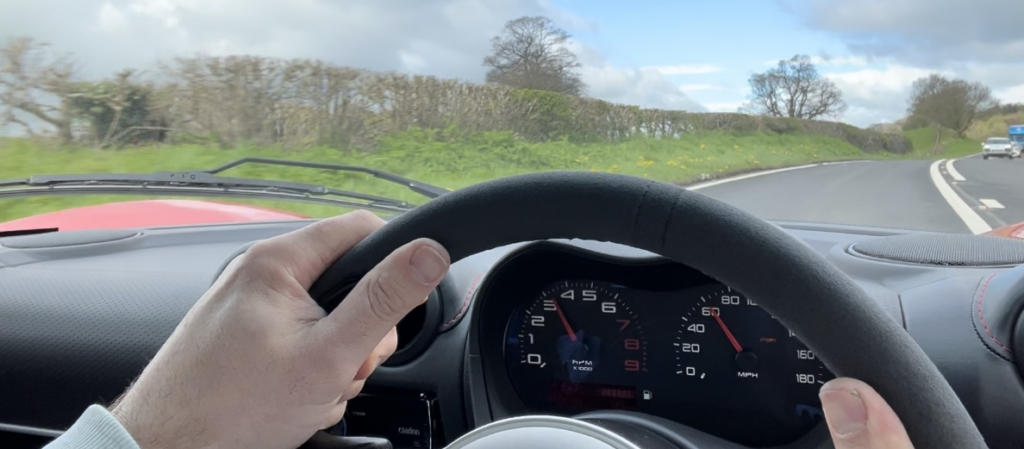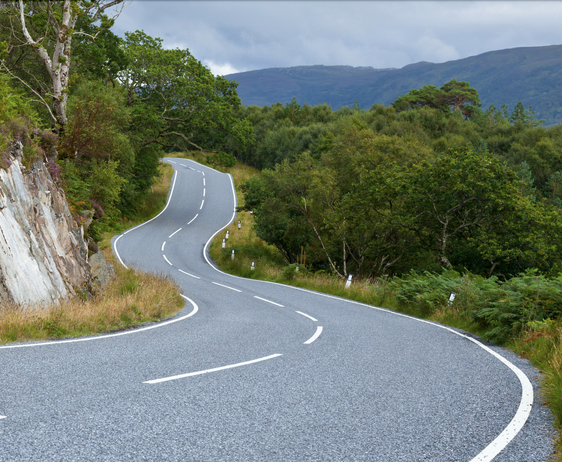Rural roads are dangerous.
You’re far more likely to come to serious harm when driving on a rural road than any other type of road. During our range of driving courses, whether it be performance training, confidence development, younger driver training or a large training project for 1,000 + company car or van drivers, we always try and cover rural roads for a part of a training session.

What makes rural roads so dangerous?
In no specific order, below is a brief insight point-by-point into why rural roads are so dangerous and, as a result, why rural driver training is so important for every driver – regardless of skill, confidence or experience.
They are difficult – from a vehicle dynamic and control viewpoint, rural roads are complex. The varying cambers, road surfaces, and corners require a lot of concentration from the driver. Corners can “suddenly” become sharper than they first appear if a driver is not paying attention.
If you’re carrying too much speed, this can cause major problems – as a minimum, it can make a driver apply a touch of the brakes mid-corner to scrub off speed, mainly for their own comfort and confidence. At worst excess speed on a corner can mean a total loss of control, causing understeer or oversteer. If you enter a corner too fast, panic and jump off the gas, it can cause the rear of the car to become light where weight shifts to the front of the car – resulting in something called lift-off oversteer.
During rural road training, we introduce something called the limit point, which helps you assess the severity of the corner, so you’re approaching the corner at the right speed with control and safety in mind. You can make good progress on roads you don’t know by using the limit point.

Speed Cameras & Limits – Drivers often drive too fast on rural roads as they can be seen as a challenge and fun. Others drive too fast as the speed limit is often way faster than you can realistically drive, especially on single-track roads, which often have a national speed limit applied, so a cart blanche attitude to speed is common. There are also often few, if any, speed cameras. On a driving course with us, we place a specific focus towards speed and often ask a driver if they can stop in the space they can see to be clear. We also look at how road surfaces and conditions impact braking distance and braking stability.
Wildlife – One risk which can pose an incredible threat to even the safest of drivers is wild animals. While road signs often hint wild animals can be near, there is no guarantee where they may be lurking; it’s especially dangerous late at night and early in the morning when visibility is reduced. The threat wildlife pose is one of the key points drivers tend to take on board when we discuss rural road risks with them. Speed awareness, especially in poor light conditions, is something we are always very keen to get across when training with a client.
Weather – Rural roads are often more susceptible to poor weather, especially in the winter. When it is snowy or very icy, gritters are less able to treat all the minor roads – making them very treacherous. Our winter driving course is purposely designed to help drivers who have to drive these often untreated roads. But it’s not just the obvious things a driver needs to consider. Trees and bridges on rural roads can often create microclimates – meaning on a cold day, deadly ice patches can reside under trees and bridges where the sun has not managed to reach – this is especially so on roads with little traffic. An unsuspecting driver on a cold sunny day may assume the road ahead is clear. This is not always the case. Commentary driving which helps a driver increase their observation can really help here – instead of driving on autopilot, we help drivers to say out loud what they can see and the risks they need to be considering as they drive. Commentary driving can be used for pretty much all areas of driving and is a valuable advanced driving technique we are keen to introduce on our courses, where relevant.
Cyclists, Walkers and Horses – These make little or no sound and can appear at the last minute with a driver. The nature of rural roads means visibility of the road ahead is often limited by corners and crests. We teach a driver to always be prepared. Do they know for sure there isn’t a cyclist, walker or hose just around the corner? Approaching a left corner, when safe to do so, we will often ask a driver to move out to the right for improved visibility for a corner and vice versa for a right corner. It’s not the quickest line around the corner, but often it’s the safest.
Depending on your location, we can tailor how much rural road training is covered. In more urban areas, we do try and head out of town. While rural road training is valuable, it is certainly not mandatory – a motorway course would not include any rural roads, and neither would an urban driving course. All our courses are bespoke to your own specific needs. Please talk with a course advisor to discuss our course options.
Book your driving course:
To book your driving course with us, please go to www.advanced-driving.co.uk/book/ or email / call us for more information. A member of our team will be able to answer any questions you may have.
